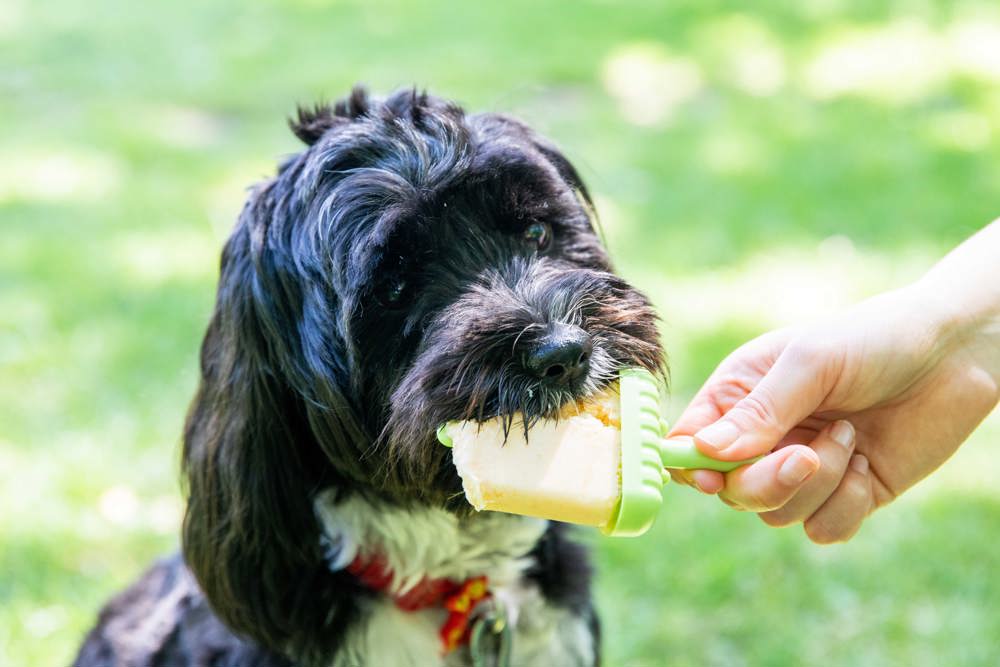
If your dog needs a cool treat on a hot summer's day, then why not use one of our summer recipes for an icy cold dog treats for them to enjoy.
Our recipes
- Sunshine ice lollies
- Beach berry frosties
- Summer pupsicles
- Berry boost bones
- Cool-as-a-cucumber crunchies
Find out more about portion control and other things to think about when treating your dog to one of our summery snacks.
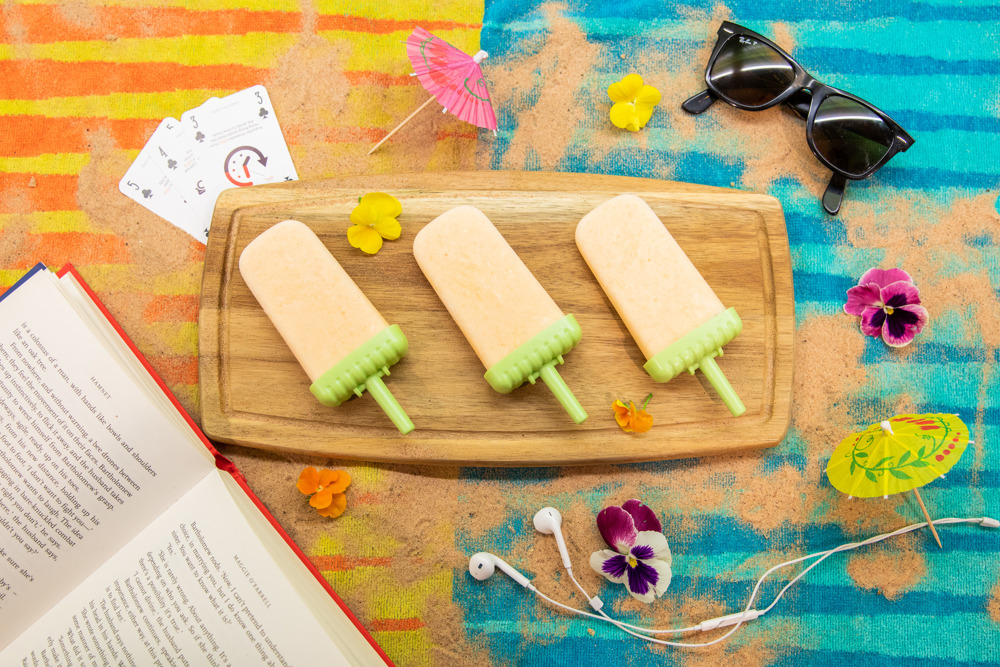
Summer pupsicles
Ingredients:
- 300g cantaloupe melon
- 100g Greek yoghurt
- 2 tsp honey
- Remove the skin and seeds of the melon, chop into small chunks and put in the freezer for three hours
- Add all ingredients to a food processor, or blender, and blitz until combined
- Add the mixture into ice lolly moulds, or an ice cube tray
- Put into the freezer for a minimum of four hours, or overnight
- Take the treats you want to give to your dog out of the freezer a few minutes before giving to them. This should help to make sure that they're not too hard for their teeth
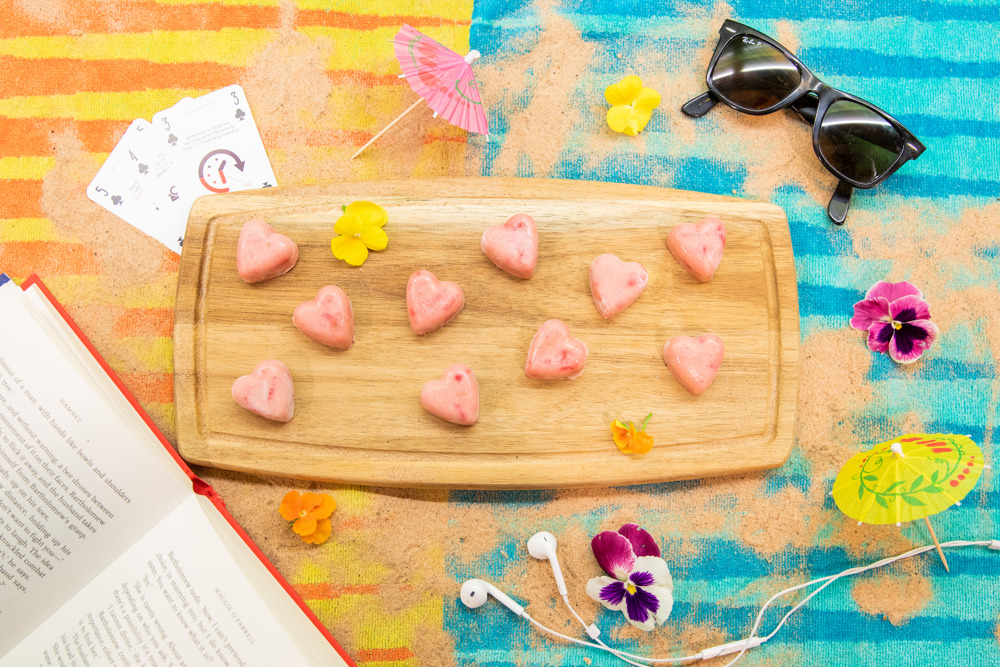
Beach berry frosties
Ingredients:
- 12 strawberries
- 3 tbsp peanut butter (xylitol-free)
- 3 tsp cold water
- Wash the strawberries and cut off the tops
- Add the strawberries and water to a food processor, or blender, and blitz until they resemble a puree
- Pour the mixture into the moulds
- Add a small amount of peanut butter to the centre of the mixture
- Leave in the freezer for a minimum of four hours, or overnight
- Take the treats you want to give to your dog out of the freezer a few minutes before giving to them. This should help to make sure that they're not too hard for their teeth
- Once ready, top with a small amount of peanut butter
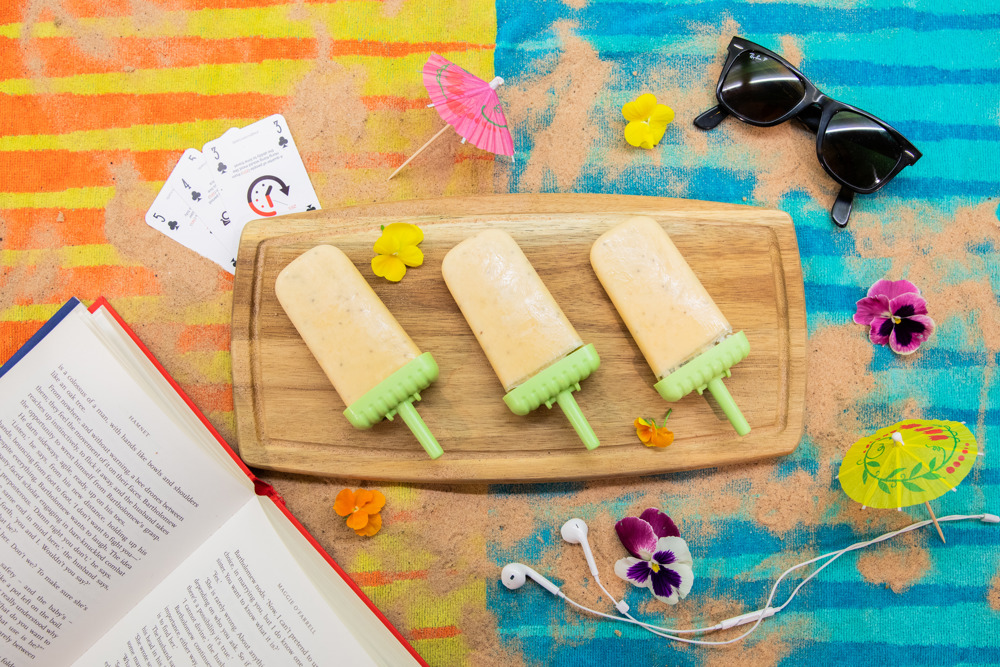
Sunshine ice lollies
Ingredients:
- 200ml oat milk
- 110g pumpkin puree
- 110g Greek yoghurt
- 1 small banana
- 2 tbsp peanut butter (xylitol-free)
- 1 tsp honey
- 1 tsp chia seeds (optional)
- Place all ingredients into a food processor, or blender, and blitz until the mixture forms a creamy texture
- Spoon the mixture into the ice lolly moulds, or a mould of your choice
- Put into the freezer for a minimum of four hours, or overnight
- Take the treats you want to give to your dog out of the freezer a few minutes before giving to them. This should help to make sure that they're not too hard for their teeth
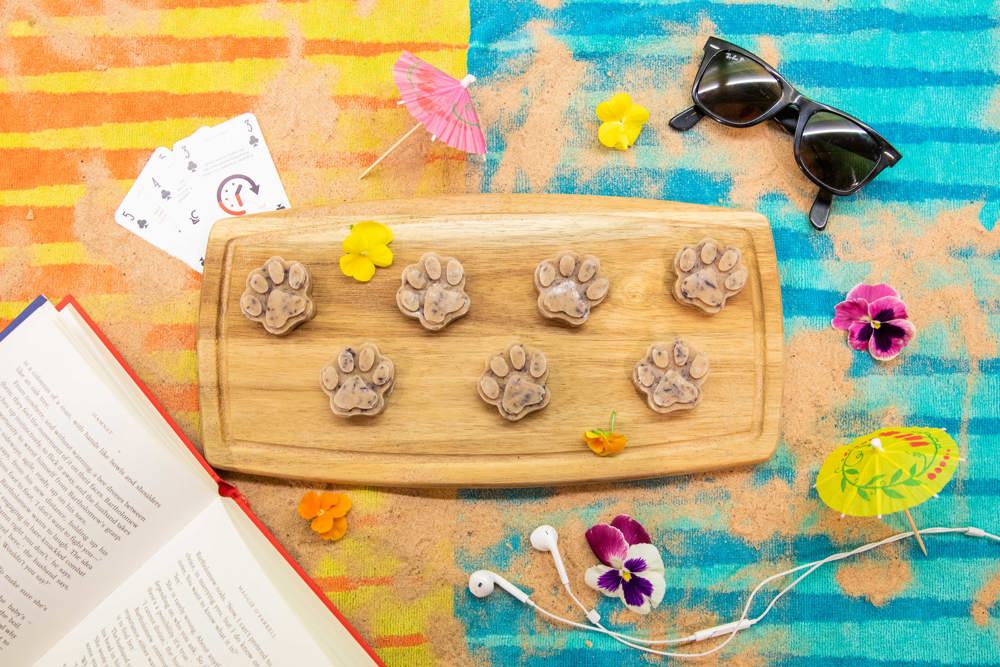
Berry boost paws
Ingredients:
- 140g blueberries
- 110g Greek yoghurt
- 1 small ripe banana
- Wash the blueberries
- Add all of the ingredients to a food processor or blender. Blitz for about 90 seconds until it forms a smoothie-like mixture
- Pour the mixture into the bone moulds, or an ice cube tray
- Put in the freezer for a minimum of four hours, or overnight
- Take the treats you want to give to your dog out of the freezer a few minutes before giving to them. This should help to make sure that they're not too hard for their teeth
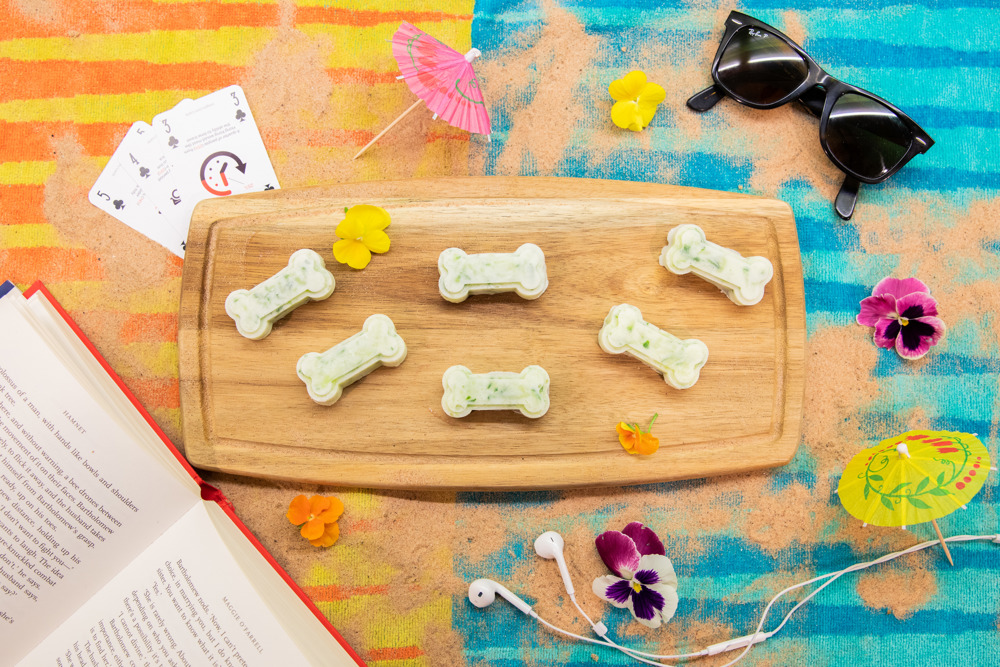
Cool-as-a-cucumber crunchies
Ingredients:
- 110g Greek yoghurt
- 1 medium cucumber
- 1 tsp honey
- Chop the cucumber into small pieces
- Add all the ingredients to a food processor, or blender, and blitz
- Pour the mixture into paw moulds, or an ice cube tray
- Put in the freezer for a minimum of four hours, or overnight
- Take the treats you want to give to your dog out of the freezer a few minutes before giving to them. This should help to make sure that they're not too hard for their teeth
Things to consider when making homemade treats for your dog
Is it safe to give my dog frozen treats?
Giving your dog ice cubes, frozen treats or putting ice in their water can be a great way to keep them cool on a hot summer’s day, but is there any risk of them breaking a tooth, getting it stuck in their throat or causing them to develop life-threatening bloat?
Generally speaking, giving your dog a homemade frozen treat is ok, but there are some issues to be aware of and some precautions that we recommend you take.
All of our recipes for frozen treats contain fruit, making them softer and easier to chew than solid ice. However, to be on the safe side, and to reduce the risk of damaging teeth or causing a blockage, we recommend that you:
Generally speaking, giving your dog a homemade frozen treat is ok, but there are some issues to be aware of and some precautions that we recommend you take.
All of our recipes for frozen treats contain fruit, making them softer and easier to chew than solid ice. However, to be on the safe side, and to reduce the risk of damaging teeth or causing a blockage, we recommend that you:
- Take the treats you want to give to your dog out of the freezer a few minutes before giving to them. This should help to make sure that they're not too hard for their teeth
- Use smaller moulds to put in the freezer to make them less hard and less likely to cause a blockage if swallowed whole
Portion control
The snacks we’ve listed above should only be given as an occasional treat and must be given in moderation. Giving too much food in one go can be dangerous to dogs and could cause life threatening bloat, particularly if they’ve eaten immediately before or after exercise. Large amounts of certain foods, especially fatty foods, can also cause a painful and potentially severe condition known as pancreatitis. If you ever suspect your dog has bloat or pancreatitis, then always contact your vet immediately.
It's easy to give your dog extra food throughout the day, especially around Easter, but doing so regularly can be damaging to their health and can make them less happy in the long run. It’s vital that you take care of what food you give to your dog. Maintaining good feeding habits will allow your dog to live the healthiest and happiest life possible.
It's easy to give your dog extra food throughout the day, especially around Easter, but doing so regularly can be damaging to their health and can make them less happy in the long run. It’s vital that you take care of what food you give to your dog. Maintaining good feeding habits will allow your dog to live the healthiest and happiest life possible.
Counting the calories
It’s important that you divide your dog’s total calorie intake for the day between each meal so that you're not overfeeding them. If you like to give them treats, make sure that you assign a certain amount of their calories for these before working out how much to give them for each meal.
Cautions about peanut butter and xylitol
Some of the recipes above use peanut butter. Do not use these recipes if your dog has a nut allergy.
Although dogs love peanut butter, and it’s a great source of protein, you must be careful which type you use. Always avoid feeding dogs peanut butter that is high in salt and sugar and it should never contain artificial sweeteners.
Xylitol, also known as birch sugar or E967, is an artificial sweetener that is highly toxic to dogs and can cause an otherwise healthy dog's blood sugar level to drop to dangerous levels or could cause liver failure. If your dog ever eats xylitol then contact your vet immediately.
Although dogs love peanut butter, and it’s a great source of protein, you must be careful which type you use. Always avoid feeding dogs peanut butter that is high in salt and sugar and it should never contain artificial sweeteners.
Xylitol, also known as birch sugar or E967, is an artificial sweetener that is highly toxic to dogs and can cause an otherwise healthy dog's blood sugar level to drop to dangerous levels or could cause liver failure. If your dog ever eats xylitol then contact your vet immediately.
Suitability
These recipes may not be suitable for all dogs, particularly those on a special diet or those that suffer from obesity, pancreatitis, diabetes, a sensitive stomach or those with problems with their kidneys or liver. If your dog has any pre-existing health conditions then always talk to your vet about any special diets that they may need, or what treats you can give them.
